Jona Lendering
Jona Lendering read history at Leiden University (MA 1993), specialized in Mediterranean culture at the Amsterdam Free University (MA 1996), and worked at excavations in Holland (Riethoven) and Greece (Halos). After teaching historical theory and ancient history at the Free University for several years, he was one of the founders of a school for history teaching, Livius Onderwijs. Born in Amsterdam, it has now spread to auxiliary locations in Bussum, Dronten, Gouda, Haarlem, Hoorn, Schagen, Zaanstad, and Zoetermeer. As of 2013, Livius Onderwijs has eight teachers, about 500-600 students a year, and offers tours to countries like Italy, Turkey, Iran, and Lebanon. The field trips help to etch into the students' minds some of what they've learned at the school.
Because history is for a large part telling a story, something you do best in your own language, Lendering prefers to publish in Dutch journals. However, he has contributed to the Bryn Mawr Classical Review and Ancient Warfare, while he is the founder of Ancient History Magazine. He is also the publisher and editor of the on-line publication of the Babylonian Chronicles of the Hellenistic Period, a set of important cuneiform sources for the history of the Seleucid and Parthian Near East, transcribed, translated and commented on by Bert van der Spek of the Free University Amsterdam and Irving Finkel of the British Museum. A publication as book is in preparation.
Lendering has written several books and maintains a blog in Dutch. He is the author of several books, including Edge of Empire and Consensus and Crises. For the Livius website, which has received several awards, he collaborates closely with Bill Thayer of LacusCurtius. Lendering is also the webmaster of two daily blogs, the MainzerBeobachter.com and Grondslagen.net.
There are 9380 items in Jona Lendering:
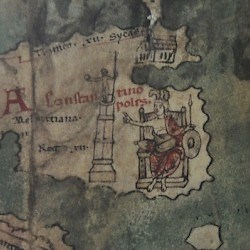
Constantinople on the Peutinger Map |
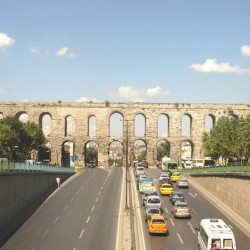
Constantinople, Aqueduct of Valens |
Constantinople, Aqueduct of Valens
Aqueduct of Valens: Roman water conduit to ancient Constantinople.In its present form, Constantinople's Aqueduct of Valens dates back to 368-375 and is named after the man who was to be defeated and killed in action three years after its completion,…Constantinople, Augusteôn Square
Augusteôn Square ("Square of the Empresses"): central square in ancient Constantinople. Augusteôn Square today; Hagia Sophia in the background Augusteôn Square was…Constantinople, Basilica Cistern
Basilica cistern: largest underground water basin in Constantinople. Basilica Cistern When Byzantium, renamed Constantinople, became the main imperial residence in the Roman…Constantinople, Church of Divine Peace
Church of Divine Peace: oldest church in Constantinople.Situated on the site of an older sanctuary of Aphrodite, Constantinople's Church of Divine Peace or S. Irene was a symbol of the triumph of Christianity. It was the first church in the…
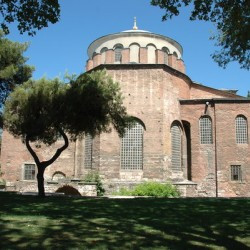
Constantinople, Church of Divine Peace |
Constantinople, Church of Divine Wisdom
Constantinople (Κωνσταντινούπολις) or Byzantium (Βυζάντιον): Greek city on the Bosphorus, capital of the Byzantine Empire, modern İstanbul. The church of the…
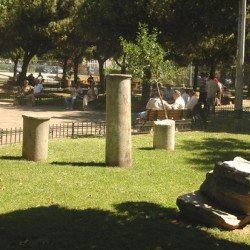
Constantinople, Church of S. Polyeuctus |
Constantinople, Church of S. Polyeuktos
Church of Saint Polyeuktos: one of the Christian sanctuaries in ancient Constantinople.The unimpressive remains of Constantinople's Church of Saint Polyeuctus were discovered when the great intersection of the Șehzadebași Caddesi and the Atatürk Bulvari was constructed. …
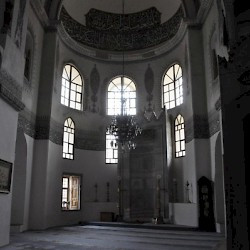
Constantinople, Church of Sergius and Bacchus, Apse |
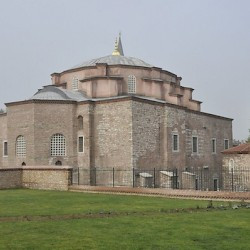
Constantinople, Church of Sergius and Bacchus, Exterior |